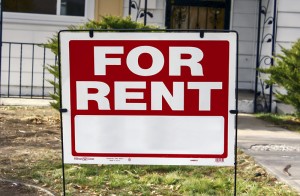 Hello everyone. It’s been a long time hasn’t it? Sorry for the delays, but if you remember my article on the Purge of 2016 it has continued in high gear in 2017 so I’ve been a little busy. So without further ado, here’s an article that’s been on my mind for awhile.
Hello everyone. It’s been a long time hasn’t it? Sorry for the delays, but if you remember my article on the Purge of 2016 it has continued in high gear in 2017 so I’ve been a little busy. So without further ado, here’s an article that’s been on my mind for awhile.
I’ve seen people talking about San Francisco’s need for affordable housing to be built so that, well, people can afford to live here. I agree that affordable housing in necessary and thought I’d share a bit of history about the Sunset District where I live.
My Grandparents and Mother bought the house I’m living in back in 1954. They chose the Sunset District because there were seven or eight contractor families that were building houses like crazy out here that were — affordable. Between the 40’s & 50’s post WWII during the Golden Years as people refer to them the US was living large after the war. The Sunset District was mostly sand dunes and nothing else so the city figured building houses would be a good way to get more residents and make them look more prosperous by being able to own a home. The houses in the Sunset were built so that working class families could afford a home and then become a part of middle class America.

I remember my Mom telling me that back then they looked at houses they could have bought for $9000, but they were pretty quickly assembled and didn’t look like they’d hold up over the years. The house they chose was asking $23k and they managed to talk the builder down to the ridiculously low price of $18k for a four bedroom with a full backyard. For 1954, that was a lot of money, but not unaffordable like houses in San Francisco have become today. My Dad used to tell me that when he and my Mom were first married that he used to toss her dog over the three foot back fence and let him run in the sand dunes that stretched out to the beach until more houses were built behind ours. The backyards when the houses were built were pretty much a joke. It was a fence holding in sand and nothing else. You can still find a couple of houses like that out here if you look real hard from above with Google maps.
I occasionally meet someone who can beat my price story. I met a guy who had just sold his Grandmother’s house that his grandparents had purchased in the 40’s for…$6000. It was a simple two bedroom with nothing special about it and it had the short [keylot] backyard. The selling price…$1.2 million.
Back then San Francisco had 100,000 less residents than it does today and room to grow. It was easy back then to quickly build houses that people could afford. Today, not so much. There’s no room to grow anymore unless they build in Hunter’s Point which I’ve mentioned previously, but all of the open space has been taken up so if they can’t build out they can only build up. I won’t go any further on this part because that would be another article entirely.
I remember being a kid and hearing my Mom tell my Dad in the 70’s, Did you know the house up the street just sold for $50,000? Who would pay $50,000 for a house…HERE! If my Mom were alive today and knew how much houses go for she’d probably have another heart attack and die a second time. There has been talk about the housing bubble bursting for years. Not just since 2000, but well before that and sometimes it does, but it always comes back with a vengeance. The Sunset District now is seeing many more houses selling for closer to $2,000,000 well up from the $800k median when the prices fell in 2011.
The newspapers and hip websites never pay attention to the Sunset District either because they don’t want people to know about it or because they think it’s an uncool urban suburbia. I think that might be part of the reason the real estate is getting so hot out here. You’re in the city, but not and no one knows you live here. Oh, and Karl the Fog is always your next door neighbor. Next time you make a wrong turn and end up in the Sunset District take a look at the houses and just think for a second about this article and how much you wish you had been here in the 40’s or 50’s.










